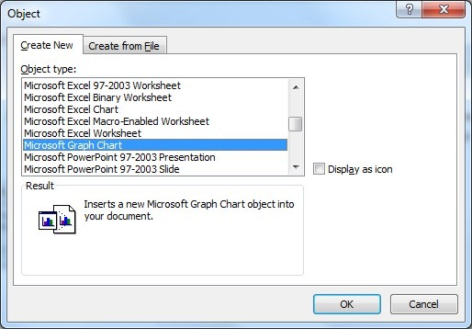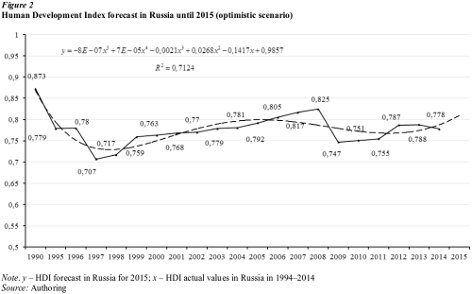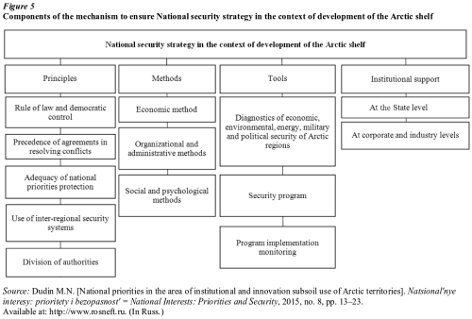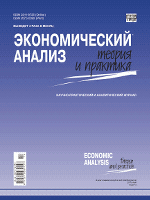Abstracting and IndexingРИНЦReferativny Zhurnal VINITI RAS Worldcat Google Scholar Online availableEastvieweLIBRARY.RU Biblioclub |
Guide for AuthorsRevised version, August 2018
Up ↑ All author's materials submitted to the Economic Analysis: Theory and Practice journal for publication should be formatted in accordance with the journal's requirements. Unformatted materials shall never be accepted. Up ↑ Economic Analysis: Theory and Practice is a peer-reviewed academic journal founded in 2002 in accordance with the classical subscription model. Since 2018, the journal has been offering authors different ways of publishing their research findings, including the Open Access model. The journal publishes research and practice articles on the results of research in the field of the following:
The journal covers both fundamental and applied research in the field of economic, investment, and marketing analyses, theory and practice of statistics, control and audit, and the use of economic and mathematical methods and mathematical modeling of economic functions and phenomenа. The journal spotlights the following scope of subjects and aspects:
The journal features the following subject headings:
Up ↑ For information on Ethics in publishing and Ethical guidelines for journal publication see Publishing Ethics. Up ↑ All authors are requested to disclose any actual or potential conflict of interest including any financial, personal or other relationships with other people or organizations within three years of beginning the submitted work that could inappropriately influence, or be perceived to influence, their work. See also Authors. Ethical behavior Up ↑ • Submission Declaration and Verification Submitting the article in compliance with the Civil Code of the Russian Federation, RF Federal Law Part 4 of December 18, 2006 № 230-FZ, the author takes responsibility for the following: the work described has not been published previously; it is not under consideration for publication elsewhere; its publication is approved by all authors and tacitly or explicitly by the responsible authorities where the work was carried out, and that, if accepted, it will not be published elsewhere in the same form, in Russian, English or in any other language, including electronically without the written consent of the copyright-holder. Up ↑ Author names may not be added, deleted or rearranged once the paper has been processed and accepted. Please ensure that the author list is complete and in the proper order when submitting your final version to the processing editor. Up ↑ Upon acceptance of an article, authors will be asked to complete a 'Journal Publishing Agreement' (for more information on this and copyright, see Copyright polices). An e-mail will be sent to the corresponding author confirming receipt of the manuscript together with a 'Journal Publishing Agreement' form or a link to the online version of this agreement. Subscribers may reproduce tables of contents or prepare lists of articles including abstracts for internal circulation within their institutions. Permission of the Publisher is required for resale or distribution outside the institution and for all other derivative works, including compilations and translations. If excerpts from other copyrighted works are included, the author(s) must obtain written permission from the copyright owners and credit the source(s) in the article. For more information see Permissions. As an author you (or your employer or institution) have certain rights to reuse your work. For more information see Copyright polices. Up ↑ You are requested to identify who provided financial support for the conduct of the research and/or preparation of the article and to briefly describe the role of the sponsor(s), if any, in study design; in the collection, analysis and interpretation of data; in the writing of the report; and in the decision to submit the article for publication. If the funding source(s) had no such involvement then this should be stated. Up ↑ • Language Please write your text in good Russian or English (American or British usage is accepted, but not a mixture of these). Up ↑ You may submit your manuscript as a Word file put in to correct-format requirements noted below for review, or you can do it without such a formatting. In the latter case, the author(s) will have to put in the article in accordance with the requirements of the journal for acceptance, after it is approved by reviewers and the Editor-in-Chief of the journal. Without these conditions, the article cannot be published. The article should contain:
Regardless of the primary formatting, all articles shall be reviewed, internally and/or externally, in accordance with the Regulations on Reviewing. Up ↑ General guidelines for article submission Regardless of how the article was filed initially, once finalized, the author(s) should provide the entire article revised as a file in Word document format. Text formatting should be very simple. In particular, we do not recommend that you use the text processor's options for aligning text or word hyphenation. However, if necessary, it is appropriate to apply the bold face, italics, subscripts, superscripts, etc. The author(s) should be aware that regardless of embedded images in the text or not, the source files of figures, tables, and text graphics can be requested separately and/or additionally. To avoid unnecessary errors, all authors are strongly advised to use the 'spell-check' and 'grammar-check' functions of their word processor. All submissions must be accompanied by a covering letter detailing what you are submitting. Please indicate the author to whom correspondence should be addressed (in the case of multiple authors) and include a contact address, telephone/fax numbers for the corresponding author and personal e-mail addresses for all authors. Please indicate if this is a submission of the revised article. In such a case, you should specify the registration number of the manuscript. Before submitting a manuscript, you should carefully check the text of the article and all sent files. Please note that all editorial decisions are considered final. Up ↑ The pressure for publication space in journal Economic Analysis: Theory and Practice is extreme. In this regard, the processing editor may limit the length of a paper. A paper should not exceed 20 pages (including a recommended number of images (8 or so). Use one-and-a-half-spaced typescript pages, minimum 3 cm (1-inch) margins, and 12 pt font size standard fonts. Preferred fonts: Times New Roman, Arial, Symbol, Courier. On the other hand, extremely short papers (less than 3000 words) will not be processed. Please ensure that your manuscript is paginated. This will help both editors and reviewers to process it promptly. Up ↑ Subject heading. Use JEL Classification. See also Journal Subject-Heading List.
Corresponding author. Clearly indicate who will handle correspondence at all stages of refereeing and publication, also post-publication. Ensure that phone numbers (with country and area code) are provided in addition to the e-mail address and the complete postal address. Contact details must be kept up to date by the corresponding author. Present/permanent address. If an author has moved since the work described in the article was done, or was visiting at the time, a 'Present address' (or 'Permanent address') may be indicated as a footnote to that author's name. The address at which the author actually did the work must be retained as the main, affiliation address. Superscript Arabic numerals are used for such footnotes. Up ↑ • Abstract An abstract is required for all papers. The abstract should indicate the following sections:
• Keywords Immediately following the abstract, provide a maximum of 5 keywords which appropriately represent the contents of the paper. Use the JEL Classification codes to classify the articles. See JEL Classification. Up ↑ Define abbreviations and acronyms when they first appear in the article. Ensure consistency of abbreviations throughout the article. Acronyms and abbreviations are not allowed in the graphic materials of articles. See Article Formatting. Use generally accepted and established abbreviations of units, names, etc. See Accepted Abbreviations. Use standard MS-Word tools (Bullets and/or Numbering) to make a point form. Article Text in Russian: Include Acknowledgments on the title page, as a footnote to the article title (*). List here all legal entities and/or individuals, who provided any assistance during the study, work, research, etc. See Article Formatting. (In Russian) Article Text in English: Collate Acknowledgments in a separate section at the end of the article before the references and do not, therefore, include them on the title page, as a footnote to the title or otherwise. List here those legal entities and/or individuals who provided help during the study, work, research, etc. (e.g., providing language help, writing assistance or proof reading the article, etc.). See Article Formatting. (In English) Up ↑ • SI Units SI units should be used throughout the articles. • Mathematical Expressions (formulae, equations, functions, etc.) Please submit mathematical expressions, as well as variables in text, in the MathType equation editor, as editable text and not as images. Mathematical expressions should be numbered in matching parentheses on the right, if they are mentioned later in the text. There must be an explication (explanation) of all variables specified in the order they appear, under each particular math expression. If the mathematical expressions are shown in graphic elements, the explanations should be placed in a footnote to these graphic elements. Up ↑ Footnotes should be used sparingly. Number them consecutively throughout the article. Many word processors can build footnotes into the text, and this feature may be used. Otherwise, please indicate the position of footnotes in the text and list the footnotes themselves separately at the end of the article. Do not include footnotes in the References list. Footnotes should include brief notes to the text of the article and the sources that are not acceptable to the References list, such as:
Up ↑ Graphic elements included in the file of the article, should be placed after the paragraph they are mentioned in for the first time, rather than separately in the bottom or the top of the file. All the graphic elements are to be mentioned in the text. All graphic elements (except geographical maps in high resolution) should be program-accessible for editing (i.e. they should open in the same software program they are created). Up ↑ • Figures Ensure that each illustration has a caption. Supply captions separately, not attached to the figure. (A separate list of figure captions must be included in the main body of your paper, following the references.) A caption should comprise a brief title (not on the figure itself) and a description of the illustration. Keep text in the illustrations themselves to a minimum but explain all symbols and abbreviations used. Drawings (figures) are created as follows: Insert→Drawing→Figure→New Drawing Canvas. (MS-Word built-in tools). Use lettering, arrows, lines, and other elements. There should be no items ‘hanging thick in the air’, they must all be interconnected by arrows or lines. Example:
Up ↑ • Tables Please submit tables as editable text and not as images. Tables can be placed either next to the relevant text in the article, or on separate page(s) at the end. Number tables consecutively in accordance with their appearance in the text and place any table notes below the table body. Be sparing in the use of tables and ensure that the data presented in them do not duplicate results described elsewhere in the article. Please avoid using vertical rules. Tables are created as follows: Insert→Table. (MS-Word built-in tools). A table should have a top-heading and side-heading. Alignment of data in the table is as follows: top-headings aligned centre, the other lines and columns aligned top line, the text aligned left, numerical values and figures aligned centre. Please do not use thick or double table borders; avoid using vertical rules, use shading instead, starting from the second column. Example:
All graphic elements should be in Bitmap (black and white) mode. A Bitmap is an image format that defines an image only in terms of black and white. A bitmapped image is used normally for line art because its elements can only be black and white, unlike a grayscale image. Do not use 3D-format and shading. Use only SI units. Use the preferred font Times New Roman (size 10 to 12 pt.) where possible. Up ↑ • Titles, Captions, Notes, Annotations Specify each graphic element’s type and number (if there are several of them) over the element. Place the element’s title next below. Place any data source (they maybe a few), notes, legends to mathematical expressions below the graphic element body, for example:
Important! Be sparing in the use of tables and ensure that the data presented in them do not duplicate results described elsewhere in the article and vice versa. Up ↑ All references to other papers, books, etc., must be given at the end of the paper. They should be numbered in sequence starting at the beginning of the paper. The numbers (in brackets) should appear in the text at the appropriate places. As the reference sources, the following materials can be used:
The sources mentioned should be indicated as footnotes at the bottom of the page. See The relevant section ↑. Any tutorials, manuals, guidebooks, abstracts of thesis, and theses must not be included in the reference list or page footnotes! The references are to be compiled in the same sequence they appear mentioned in the text of the article, rather than alphabetically (use the Vancouver Citation Style). The author(s) is(are) responsible for the accuracy and credibility of all information, citations, and links to cited sources. Up ↑ Please ensure that every reference cited in the text is also present in the reference list (and vice versa). Any references cited in the abstract must be given in full. Unpublished results and personal communications are not recommended in the reference list, but may be mentioned in the text. If these references are included in the reference list they should follow the standard reference style of the journal (See Journal In-house Reference Style) and should include a substitution of the publication date with either 'Unpublished results' or 'Personal communication'. Citation of a reference as 'in press' implies that the item has been accepted for publication. Indicate references by number(s) in square brackets in line with the text in the order they appear in it. If there are several references, they should be listed in square brackets, separated by commas or dashes. It is correct to refer to the actual authors using their initials and surname. The reference number(s) must always be given. You can refer to multiple sources, but not all at once. Example:
Up ↑ Journal titles should be abbreviated in accordance with the List of Title Word Abbreviations. Digital identifiers (if any) to cited references, such as DOI, PMID, and other, should be indicated in the references. Up ↑ It is hoped that this list will be useful during the final checking of an article prior to sending it to the journal's Editor for review. Please consult this Guide for Authors for further details of any item. Ensure that the following items are present:
Important! Permission has been obtained for use of all copyrighted material from other sources (including the Web). Up ↑ To check the status of your article, please request via e-mail post@fin-izdat.ru, indicating the individual registration number of the material in the subject line of the message. |
ISSN 2311-8725 (Online)
|
|












